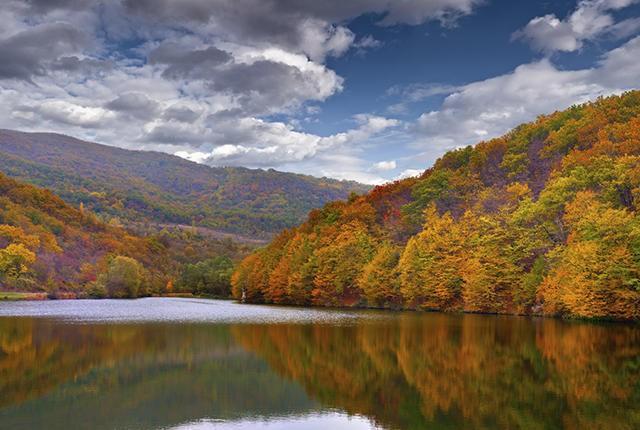Leaves change color as the trees stop making chlorophyll, the sun-absorbing molecule that is vital to photosynthesis and gives them their green hue. As the green pigment of the leaves fades, we begin to see the other pigments present.
While some of the panoply of fall hues in a forest depends on factors like weather and geography, different tree species tend toward certain colors when their chlorophyll-green leaves are exposed to the shorter days of fall.
Here are 9 species—some well-known, others slightly more obscure to the non-tree nerds among us—to watch out for if you want to see a full rainbow of foliage colors this fall. And if you've got another fall foliage favorite, let us know in the comments!
1. ASPEN
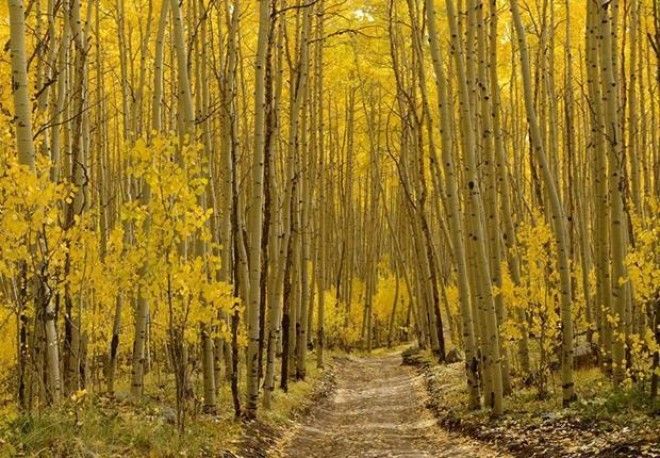
Colorado’s favorite tree turns a brilliant gold as the weather cools. Genetics play a role in determining when leaves change colors due to the chemical balance within the leaves. Since aspens reproduce by cloning (through a root system that expands underground), you can see which trees are genetically identical—if there are a bunch of bright yellow trees standing out in a forest that’s still largely green, that probably means those trees are all clones.
2. BLACK TUPELO
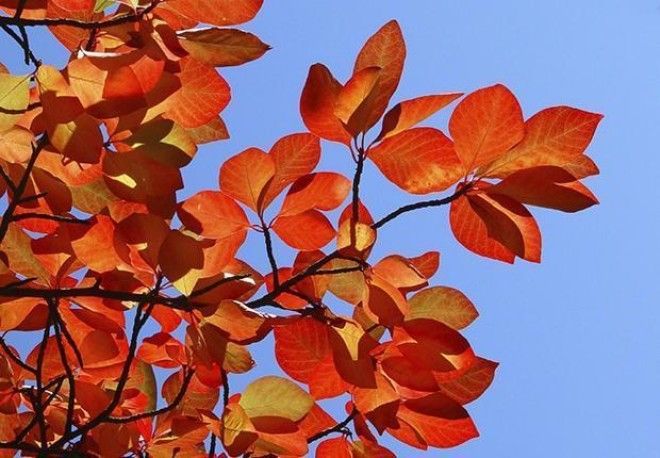
Also known as the black gum tree, Nyssa sylvatica is one of the first trees to show its fall colors during the year. Before it becomes a solid mass of bright red, its leaves can turn purple, yellow, and orange.
3. SUGAR MAPLE
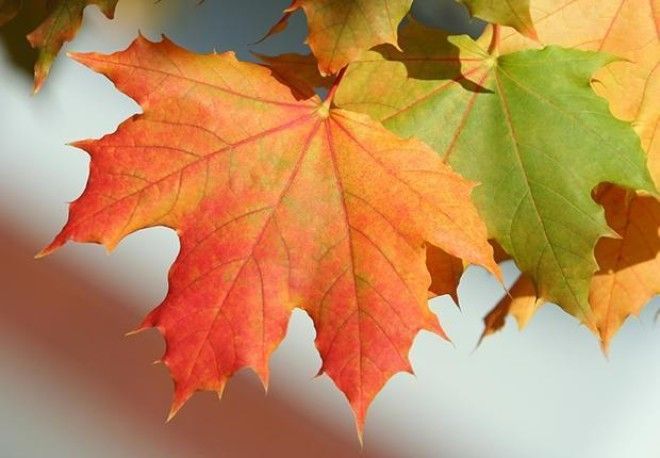
This common tree (whose leaf serves as the Canadian national symbol) turns a host of different colors at the same time. Its leaves turn yellow, orange, red, and every hue in between. The Acer saccharum is native to many parts of the eastern United States and Canada.
4. CANADA RED CHOKE CHERRY
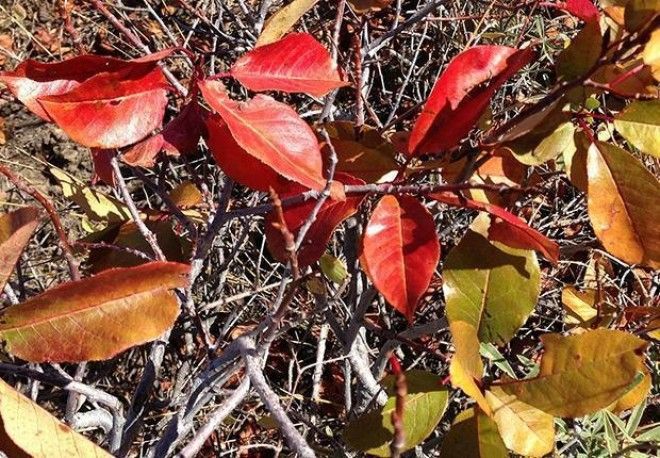
A chokecherry shrub in Nevada.
The Prunus virginiana starts out the year with green leaves, but by summer they turn purple. Once fall comes, they morph from red to reddish purple, ensuring a broad range of colors throughout the year.
5. SASSAFRAS
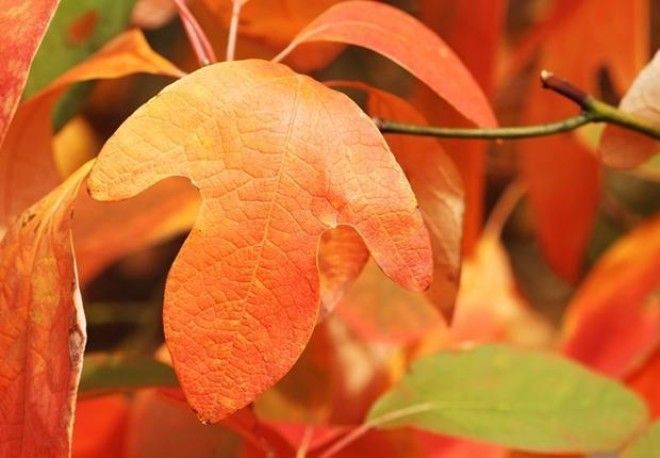
Sassafras albidum, the tree that lends root beer its flavor, makes for a spectacular fall display. Its three-lobed leaves can turn yellow, orange, red, and even a pinkish color in autumn.
6. BRADFORD PEAR
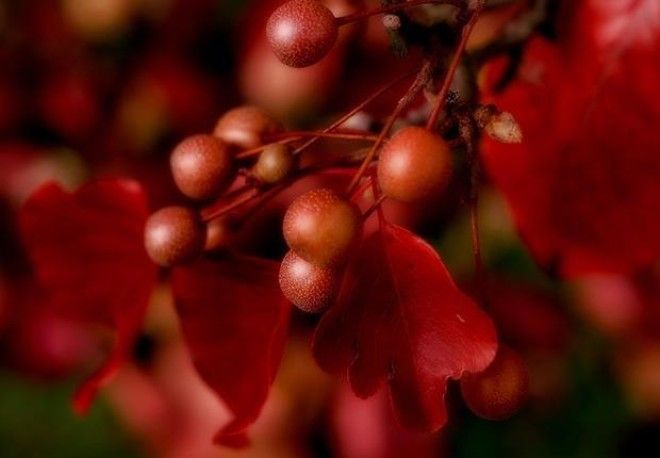
Miss the boat on your fall foliage road trip? The Bradford pear, a landscape tree originally native to China and Vietnam, is one of the last trees to change colors in the fall, morphing into a luscious maroon.
7. KATSURA TREE
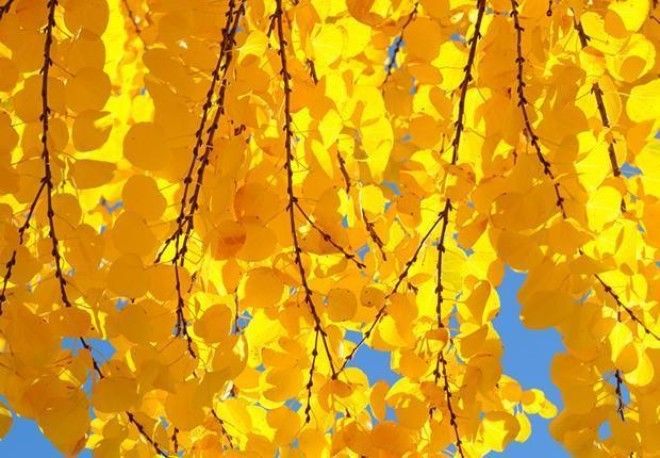
Cercidiphyllum japonicum, a flowering tree native to Japan, turns bright yellow and pinkish red during the fall. Moreover, when its leaves finally drop, the tree has a sweet aroma that passersby liken to burnt sugar or cotton candy.
8. AMERICAN BEECH
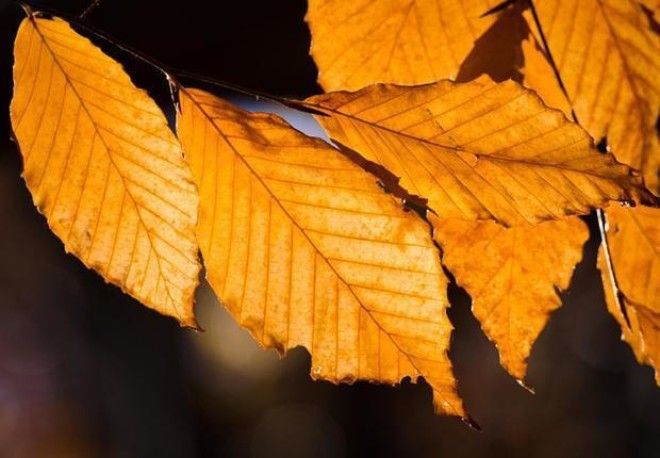
The tall Fagus grandifolia, found in forests throughout eastern North America, features golden brown foliage in the fall, a color offset by its pale white bark.
9. MAPLE-LEAF VIBURNUM
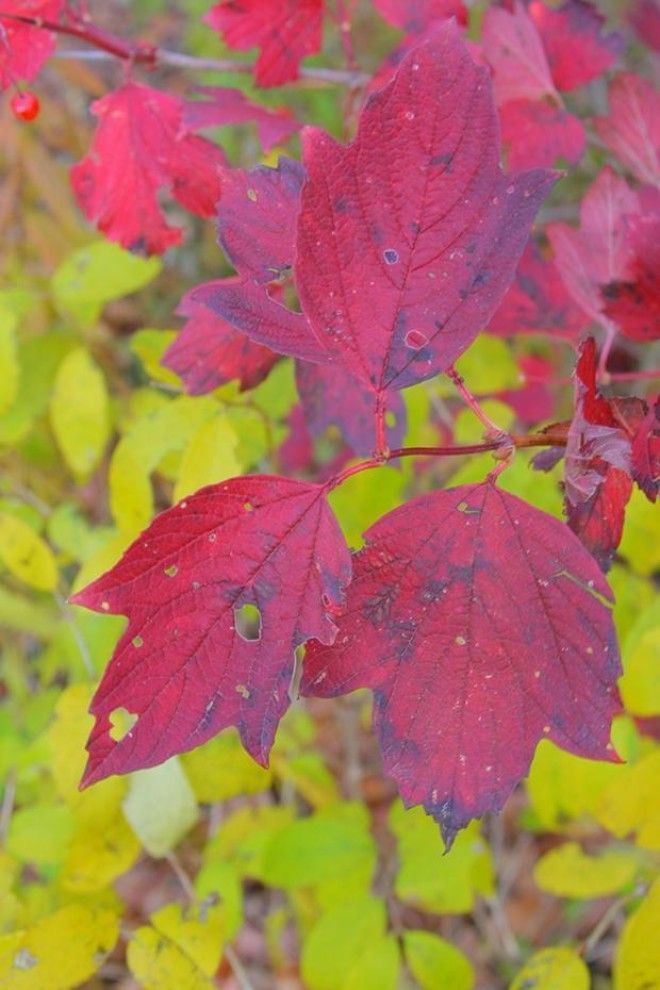
Viburnum acerifolium is technically more of a bush than a tree (it’s related to honeysuckle), but its fall colors make up for its small stature. Late in the year, its sharp leaves turn pinkish-purple.
